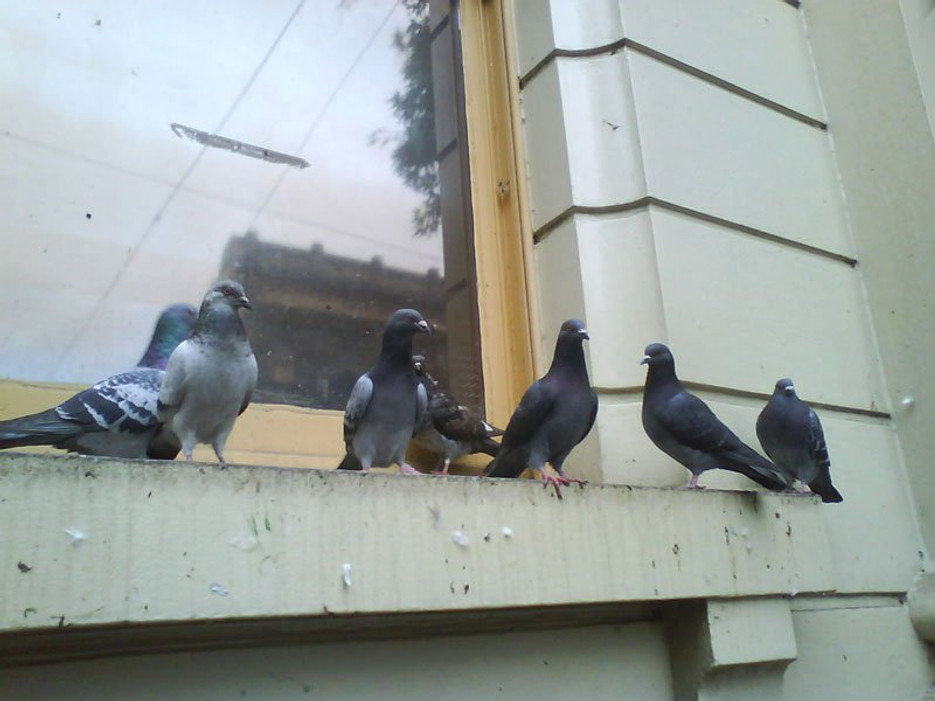Where to Look for Pest Pigeons on Your Building
Pigeons are the number one pest bird problem in the United States. They will nest and roost on, in and under many different structures. To keep pigeons from defacing and damaging property, it’s important to know where they roost and nest. What they eat and how they often gather in such large numbers.
Food, Shelter and Safety
Pigeons prefer lofty places that offer safety from predators and the easy access to food and water. Today’s pigeons have grown highly dependent on humans for food and sites for roosting, loafing and nesting. The birds need about 1 ounce (30 ml) of water every day, so look up from any source of free-standing water and chances are you’ll find them. This is also why pigeons prefer roof spaces that contain unsealed water tanks or cisterns. In their search for food, pigeons will scavenge around outdoor eateries and open trash containers. In attics and similar enclosures, look for nests near heating units, electric transformers, fans and other areas that offer warmth. In commercial buildings, pigeon nests can be found near lighting and heating systems, again for warmth. In general, pigeons prefer poorly maintained and unoccupied buildings, where water has entered, where dry rot is prevalent.
Identifying Nests
Pigeon nests are constructed of twigs and are often in covered in droppings. They are most often found around farmyards, grain elevators, feed mills, parks, city buildings, and bridges. City buildings and window ledges mimic the rocky cliffs once inhabited by their early ancestors in Europe. The birds will typically build a flimsy platform nest of straw and sticks. They will reuse the same location over and over, often building new nests over old ones. The nests become sturdy, mud-like mounds, reinforced by droppings that become increasingly larger. Nests can usually be found on ledges, under rooftop structures, and on the window ledges of buildings. Pigeons have even been known to nest under solar panels. So be on lookout for their nests there. Pigeons sometimes build nests in and around airport structures, which can pose a bird-strike threat to aircraft.
How They Get In
Pigeons will gain access to any sort of elevated structure like an attic, belfry or covered rooftop. They will enter through broken windows, missing or loose vents or soffit, or other gap or opening. Many pigeons prefer to nest in rain gutters. The dish-shaped structures are lofty and provide a secure place to support their nests. Being social birds, their flocks function as a team.
About Bird B Gone
Bird B Gone is the world’s largest manufacturer and distributor of bird control products, providing effective and humane solutions to a bird-free environment. Now celebrating their 25th year, the company provides advice; training and installation services for those who need help with these and other bird control measures. For the complete line of products from Bird B Gone, call 1-800-392-6915; fax: 949-472-3116 or visit our website at www.birdbgone.com, e-mail: nobirds@birdbgone.com.

